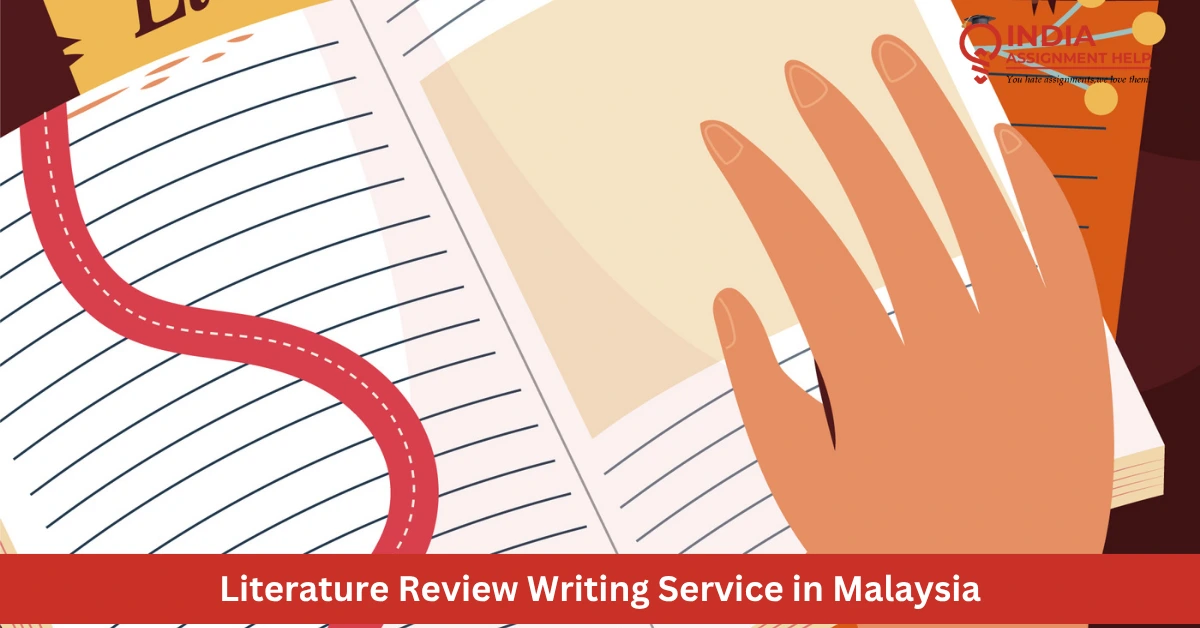How to Write a Literature Review? A Simple Guide By The Best Literature Review Writing Service

Writing a literature review can feel like piecing together a giant, complicated puzzle, but it doesn’t have to be that way. Many students and research scholars feel overwhelmed by the mountain of articles and books they need to read before they can start writing. But no matter how overwhelming it feels, you can’t skip it. A literature review sets the foundation of your study, whether you’re writing a research paper, thesis, or dissertation.
If you’ve ever found yourself staring at your computer screen with multiple tabs open, unsure where to begin and how to read and organize all that information, this blog is for you. Here, we’ll discuss a simple step-by-step guide to writing a literature review. This exact process is followed by hundreds of experts at our literature review writing service, so you can follow this without any hesitation.
What Is a Literature Review?
A literature review is a review and analysis of existing research on a specific topic. Many students confuse it with just a summary. And that’s where they go wrong. You don’t just have to list down previous studies, but also compare them to identify gaps. The goal of a literature review is to build a context for your research and find where it fits.
The literature review is your way of showing that you understand what’s already been discussed and where your contribution fits.
How to Write a Literature Review?
Writing a literature review is a long and complicated process that involves going through a lot of articles and books. If you don’t have a process for this outlined already, chances are you’d probably get lost in the middle of it and waste a lot of your time.
We receive hundreds of queries at our literature review writing service every day, and our experts are well-versed in academic writing. Let’s see their step-by-step guide to writing a high-quality literature review.
Step 1: Understand the Purpose
Before you start writing, make sure you clearly understand why exactly you're writing a literature review. The most common reasons for writing a literature review are
- To identify what has already been studied on your topic
- To point out gaps, contradictions, or underexplored areas in existing research
- To establish the theoretical framework for your study
- To justify your research question or hypothesis
Knowing your purpose will help you stay focused and avoid turning the review into a general summary.
Step 2: Define Your Topic and Scope
Don’t start searching blindly on the internet. First, define your research question or topic. Then, decide how broad or narrow your review will be.
Ask yourself:
- What period am I covering? (e.g., the last 10 years)
- What types of sources will I include? (e.g., only peer-reviewed articles or also books, reports, and theses)
- What disciplines are relevant? (e.g., psychology, education, sociology)
Being clear about your boundaries will help you search for only what you need and avoid information overload.
Step 3: Search for Literature
This part takes time and patience. To search for a Literature review, you can use academic databases such as
- Google Scholar
- JSTOR
- PubMed
- Scopus
- Web of Science
Use a mix of keywords, phrases, and AND, OR, and NOT to refine your search. For example:
- "Online learning AND student engagement"
- "E-learning OR digital education, NOT virtual reality."
When you open an article, just skim through the abstract to decide whether the article is worth reading in full.
Step 4: Keep Track of What You Read
The next step is to keep track of your sources. Most students make the mistake of just reading through the literature without taking notes of the important points.
To stay organized:
- Use tools like Zotero, Mendeley, or EndNote to manage references.
- Create a spreadsheet to record key information like author, year, methodology, findings, and your notes.
- Highlight recurring patterns or conflicting results.
If you are systematic from the start, it’ll save you a lot of frustration later.
Step 5: Read Critically
Reading for a literature review is not the same as reading for fun. You need to be an active, analytical reader and critically review every paragraph you come across.
Ask questions like
- What is the main argument or research question?
- What methods did the authors use?
- What were the strengths and weaknesses?
- How does this study compare to others?
- Are the conclusions supported by evidence?
You have to look for patterns, themes, and contradictions across studies. These observations will become the backbone of your review.
Step 6: Group the Literature
Once you’ve read a good number of sources, start grouping them. Don’t try to write paragraph after paragraph about individual studies. Instead, categorize them in ways that make sense for your topic.
You could group by:
- Theme or topic (e.g., factors affecting online engagement)
- Methodology (qualitative vs. quantitative)
- Chronology (early research vs. recent studies)
- Geographic focus (studies from Western vs. Asian countries)
Creating these groups will help your writing process and your review feel structured and not scattered.
Step 7: Start Writing
Many students go wrong when they start writing summaries of each paper. But a good literature review is more than that.
Your review should:
- Synthesize: Combine insights from different studies to draw bigger conclusions.
- Compare and Contrast: Highlight where researchers agree and disagree.
- Critique: Identify limitations or biases in studies.
- Build an Argument: Use the existing research to lead to your research question or thesis.
An example of synthesis:
“While both Johnson (2018) and Lee (2020) found that student motivation increased with gamified learning, only Lee explored the long-term retention of knowledge, revealing mixed results.”
This kind of writing shows that you're not just reporting what has been said before, but you're also engaging with the material. The best literature review writing service in Malaysia follows this method to write its reviews.
Step 8: Structure Your Literature Review
A well-structured literature review typically includes
Introduction
- Define your topic and purpose
- Explain the criteria for selecting sources
- Give a brief outline of how your review is organized
Body Paragraphs
- Group studies into themes
- Discuss the key findings, debates, and gaps
- Use linking words to connect ideas and maintain flow (e.g., "Similarly", "However", "In contrast")
Conclusion
- Summarize the major insights
- Highlight the gaps or issues needing further study
- Show how your research will contribute
You can also take the help of Assignment Help services to help you with structuring and formatting your literature review.
Step 9: Revise and Refine
The next step is to revise until it feels perfect to read. Writing a literature review is an iterative process. You’ll have to reread your entire review with fresh eyes or ask a peer or mentor to give feedback.
Check for:
- Logical flow and transitions
- Clarity of language
- Redundancies or repetition
- Grammar and citation accuracy
Use tools like Grammarly for grammar checks and Turnitin or plagiarism checkers to ensure originality.
Step 10: Cite Properly
Every source you refer to must be cited accurately in your paper. It is advised to use the citation style your institution requires (APA, MLA, Chicago, Harvard, etc.), so carefully read the brief before proceeding.
Even if you're paraphrasing, citations are necessary because missing citations can lead to plagiarism, even if it is unintentional. You can use tools like Citation Machine to generate citations if you’re unsure. You can also hire a custom literature review writing service for referencing help.
Final Thoughts
A literature review is the first step in writing your paper. It helps you map out the knowledge landscape of your field. A good literature review shows that you have a deep understanding of your field. It’s your opportunity to show your depth of understanding and position your research meaningfully.
Writing a literature review feels overwhelming at first, but with each step, it becomes more manageable. And once you’re done, you’ll not only have a strong literature review but you’ll also be well-prepared to write the rest of your research.
If you still find it difficult, you can reach out to us for a literature review writing service, and we will help plan, structure, and draft your literature review to perfection. Let your literature review reflect not just what you’ve read, but also how well you’ve understood and connected it all.





